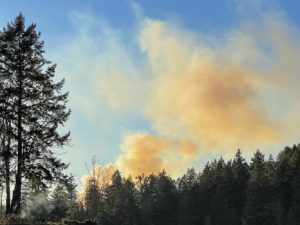 Wildfires in the North American boreal forest burn vast tracts of land every year, continuously changing the terrain while affecting plant physiology, permafrost thaw and carbon fluxes. Climate warming has been shown to lead to larger areas being burned annually, as seen in the record fire season of 2023 that burned a land mass about seven times greater than an average fire year. Now new research, published in AGU Advances, finds that beyond decimating old-growth forests and releasing large amounts of CO2 into the atmosphere, wildfires warm the surface of the land substantially for about five decades in the summer and slightly cool land temperatures in the winter.
Wildfires in the North American boreal forest burn vast tracts of land every year, continuously changing the terrain while affecting plant physiology, permafrost thaw and carbon fluxes. Climate warming has been shown to lead to larger areas being burned annually, as seen in the record fire season of 2023 that burned a land mass about seven times greater than an average fire year. Now new research, published in AGU Advances, finds that beyond decimating old-growth forests and releasing large amounts of CO2 into the atmosphere, wildfires warm the surface of the land substantially for about five decades in the summer and slightly cool land temperatures in the winter.